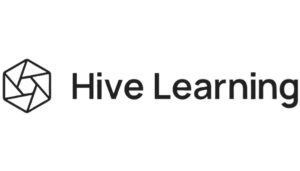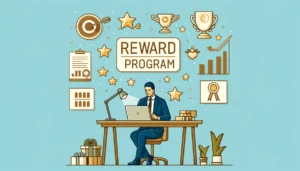HRD Roundtable Report: Putting skills at the centre of your people strategy – how to win during volatile times?
- 8 Min Read
When asked, most HR and people leaders would admit to experiencing a prominent skills gap, with an equally large proportion confessing they don’t have a clear plan for addressing the problem. As businesses continue to prepare for increasingly volatile times ahead, adopting a proactive, rather than reactive approach to skills and workforce planning will be […]
- Event Types
- Date of Event: Feb 21, 2023


When asked, most HR and people leaders would admit to experiencing a prominent skills gap, with an equally large proportion confessing they don’t have a clear plan for addressing the problem. As businesses continue to prepare for increasingly volatile times ahead, adopting a proactive, rather than reactive approach to skills and workforce planning will be a non-negotiable to weather the disruptive economic headwinds to come.
How do you know if you have the right skills, in the right roles, and with the right people? How should you be planning for unpredictable times, and how can you ensure your workforce planning and skills strategies are adaptable? On Tuesday 21st February 2023, HRD Connect hosted a group of senior people leaders to discuss this topic in a virtual roundtable that was led by Ed O’Brien, Head of Learning & Development, Europe and Latin America, Ericsson, supported by Richard Doherty, Senior Director, Product Marketing, Workday. The session was conducted under Chatham House rules so while this write-up will highlight key discussion points and takeaways, all participants are anonymised.
The importance of assessing current skills and competencies
Ed O’Brien opened the discussion by sharing how Ericsson had been focusing on developing skills as a part of their people strategy to succeed in volatile times. Richard Doherty, from Workday, shared how they’ve been building out skill functionalities in recent years, and explained how he’s interested in learning from the group how technology is aiding in the development of skills. The discussion began with an overview of what the group had learned over the last couple of years when it comes to skills in workforce planning. The group discussed the importance of mapping the skills that are currently present and how to identify the skills that will be required in the future. The conversation centred around the critical skills that are needed within organisations going into the future and what role technology plays in building them.
The first question put to the group by Ed was on how the group is currently assessing the skills and competencies of their employees and what they find most effective. Ed mentioned that they had identified certain skills that they believed were key to their future going up to 2025. These skills included security, cloud, and power skills. Ed then shared how they had identified four different levels and were trying to tag their employees to these different levels, with the beginner level being the base level and the expert level being at the top. The company measured these levels in several different ways, including through external and internal certification.
Future workforce planning
In discussing how to identify the future skill requirements for organisations, one participant explained that they worked with a strategy team to look at the different areas that they were focusing on and mapped it until 2027. This gave them a view of the areas that they wanted to get into and what they needed to do. The group also talked about how there was a creative tension between looking at long-term strategic views and focusing on immediate needs.
The conversation then turned to the role of technology in workforce planning. The group discussed how technology can help identify critical skills and competencies, and how it can help to close the skills gap. The group also talked about how technology can help to automate certain tasks, making it easier to identify and assess employee skills and competencies. The importance of training and upskilling employees was also raised to ensure organisations remain relevant and effective in the workplace.
The group then moved on to focus on the challenges they’re facing when it comes to skills in workforce planning. One participant shared how it’s difficult to accurately identify the skills that are needed in the future, as the world is constantly changing, and new skills are always emerging. The group also talked about how it can be difficult to retain employees with critical skills, as they are often in high demand and can be easily poached by other companies. It was agreed that it’s important to set clear objectives and KPIs for employees to measure the evolving effectiveness of skills and competencies within their organisation.
Identifying future roles
One participant shared that they have approached skills from a role perspective and identified roles that the organisation would need in the next 12-18 months and worked back from there to identify the skills required. They have also introduced a global career framework where everyone’s role clubs into a generic role that sits within a defined discipline and job family, so they know how and where they fit in. They then built a self-assessment tool to allow individuals to assess themselves against the identified competencies, and the level of competence required to effectively perform that role. This participant’s organisation has also introduced five practice areas to identify future skills that they will need, particularly in the digital space. They have appointed a Global Practice Lead, and HR is working within each of those practice areas to assess the current workforce to pull together a squad to identify new skills needed to move forward.
The group was interested in the process shared by this participant and asked if they could give numbers or percentages of the workforce required for new areas identified. The participant responded that they have not yet defined exactly how many people they need in each practice area, but they can estimate that most of their workforce will be in the performance management practice area since they need to deliver 50% of their revenue through digital workstreams.
Talent management challenges
Talent management was then raised, specifically concerning the challenges of employee retention and how a quality onboarding process is crucial to ensuring employees stay for the long term. One participant described how they have mapped out core job activities for each role and track progress through an LMS system. The system enables them to add additional modules for skills development and legal training, ensuring they comply with mandatory training requirements. The LMS has been a game-changer for the organisation, helping with retention efforts.
Another participant shared the challenges of global talent management in a complex organisation. This participant, who works for an organisation of 85,000 employees globally, shared that each country has its way of working, and within each country, there are areas with their own ways of working. Because of this, there is a range of capability assessments used in the organisation, with some built on SharePoint and others done manually. Consequently, this emphasised the need to focus on skills, rather than competencies and capabilities, and move away from a job having to have a set number of skills. As a result, the organisation is moving towards identifying the skills that will be required for the future, and every individual will need to begin developing those skills.
The benefit of becoming more data-driven
The group discussed the challenge of having a common language across the organisation to take data and make sense of it. This is important to ensure that everyone is using similar information and that the data quality is in a good place. They agreed that being data-driven is essential and allows for the application of machine learning and AI.
The importance of self-assessment as a means of keeping engagement high was also discussed. The participants agreed that self-assessment is an effective way of engaging employees because it empowers them to assess themselves and pull information that is relevant to their interests. As a result, they tend to push back less because they are doing it out of their interests.
It was acknowledged that different parts of an organisation may have different learning cultures, and it is necessary to be prescriptive in some cases, with the use of technology, such as Workday, being essential to take data and analyse it to create stories that can generate buy-in from leaders. Having people identified in an organisation as leads for different areas can work well. These people are known as drivers and sponsors and are responsible for reporting on how the organisation is doing in their respective areas.
Conclusion
The roundtable concluded by highlighting the importance of cultivating a learning culture in organisations to develop leaders and retain talent. It was highlighted that the absence of strong managers in organisations can cause chaos, so a system of cultivating leaders across different levels should be put in place to provide both mentorship and feedback. Reverse mentoring and pairing junior and senior employees should also be considered to improve the skill level of newer employees. Culture was identified as a critical factor in implementing these practices, and sponsors and buy-in are necessary to create an effective learning system. The need for a tracking system to capture relevant information and present it in a user-friendly manner was also discussed, with solutions, such as Workday, being fundamental to achieving a skills-based transformation.
To join future discussions please visit: HRDxWorkday UK Roundtable Series 2023 (hrdconnect.com)








